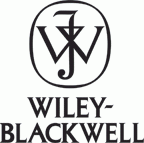Resource information
AIM: Prescribed fire is a common land management for reducing risks from unplanned fires. However, the universality of such effectiveness remains uncertain due to biogeographical variation in fuel types, climatic influences and fire regimes. Here, we explore biogeographical patterns in the effectiveness of prescribed fire by calculating leverage (the reduction in unplanned area burnt resulting from recent previous area burnt) across south‐eastern Australia over a 25 year period. LOCATION: The 30 bioregions of south‐eastern Australia. METHODS: We quantified leverage in each bioregion from fire records from 1975–2009, controlling for variation in annual weather. We also identified potential drivers of variation in leverage by relating the bioregional leverage values to measures of fuel type and growth, climate, and weather extremes. RESULTS: Leverage was inferred in four bioregions while in the other 26 bioregions no leverage was detected or prescribed fire had the opposite effect (fire‐follows‐fire). Leverage occurred in the forested eastern section of the study area, where rainfall, fuel load and fire activity is high and fire weather is mild. In all bioregions, weather was a stronger predictor than past‐fire extent of area burnt in a particular year. MAIN CONCLUSIONS: Our analysis of leverage shows that the effectiveness of prescribed fire varies regionally in predictable ways, which means that fuel management strategies applied in one region are not necessarily applicable in another. In most bioregions prescribed burning is likely to have very little effect on subsequent extent of unplanned fire, and even in regions where leverage occurs, large areas of treatment are required to substantially reduce the area burned by unplanned fire.



